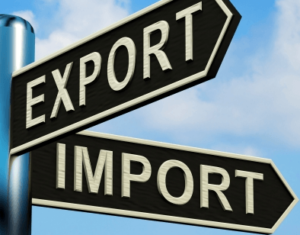Intra-African trade statistics depressing as compared to other regions
 The statistical information on Africa’s share of global trade is depressing. And statistics on intra-African trade is even more dismal.
The statistical information on Africa’s share of global trade is depressing. And statistics on intra-African trade is even more dismal.
During a conference of statisticians from across Africa in Cape Town, South Africa in January, a presentation by Simon Mevel of the Regional Integration, Infrastructure and Trade Division (RITD) of the United Nations Economic Commission for Africa (UNECA) on the statistics of trade globally, showed Africa lagging behind.
The figures show that in the year 2000, Africa’s share of global trade was 2.3% and in 2010 it stood at 3.0%.
And according to the African Trade Policy Centre (ATPC) of the United Nations Economic Commission for Africa (UNECA), global trade (in current prices) has increased from $13 trillion in 2000 to an estimated $30 trillion in 2010, but Africa’s share in world trade has been in decline since 1980 and currently stands at about three per cent.
According to the 2010 International Trade Statistics of the World Trade Organization compared to other regions,intra-African trade is low.
For instance in 2009, intra-European trade was 72%, intra-Asian trade stood at 52% and intra-North American trade was 48%.
Intra-South and Central American trade was 26% but intra-African trade was 11%.
Africa produces large amounts of raw materials, which are exported as primary products.
The data shows that the high concentration of African exports in primary products are made up of agricultural and food products, 9.4%, primary products 36.43, 35.4% are other industrial products and 18.9 of services.
The biggest challenge to intra-African trade available statistics show is the imposition of high tariffs which is a barrier to trade. Compared to the other parts of the world, higher tariffs prevail within the continent.
Statistics provided by Mevel shows that Ad Valorem Equivalent Tariff between Africa and Africa is 8.7%. It is 3.2% between the Rest of the World and the Rest of the World, while the tariffs between the World and the World stands at 3.4%, making trade within the continent among African countries much more difficult than between the continent and the rest of the world.
There are also high non-tariff barriers to trade within the continent.
He cited the World Bank Doing Business, Trading Across Borders 2012 report, the figure below summarises the challenges.
A recent World Bank report painted a gloomier picture of intra-African trade. According to the study, the continent is losing billions of dollars in potential trade earnings every year because of high trade barriers with neighbouring countries.
And this report was released days after African leaders made a call for a continental free trade zone by the year 2017.
By Emmanuel K. Dogbevi

